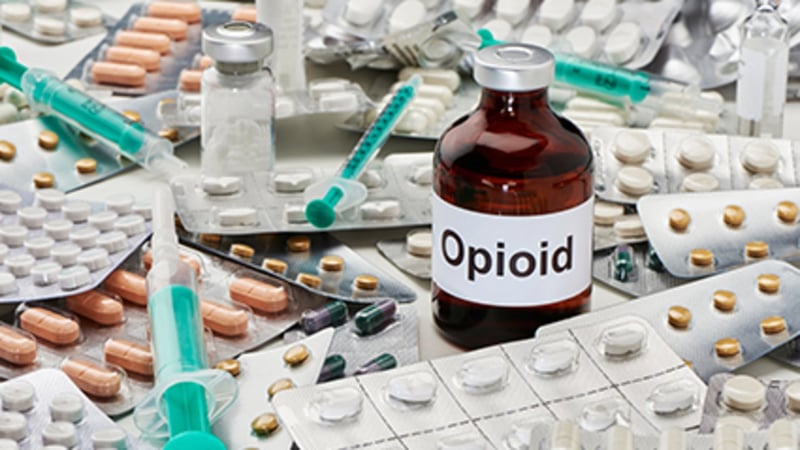Using the RefillRx mobile app? Then you will love our new, ENHANCED Sentry Drug Center mobile app.
Quickly request refills or login and manage your prescriptions on the go!
Available on both iTunes and Google Play.
Call or Visit for All of your Vaccination Needs!
Get Healthy!

- Alan Mozes
- Posted September 5, 2023
New Opioids Are Joining the Illicit Drug Supply, and They're More Potent Than Fentanyl
In recent years, the opioid epidemic has been worsened by the advent of street fentanyl, an illicit version of a powerful prescription painkiller.
But experts now warn that the threat posed by fentanyl may ultimately pale in comparison to the emergence of an even more dangerous type of synthetic opioid that's now tainting the illegal drug supply: nitazenes.
That's because a new investigation finds nitazenes are 1,000 times more potent than morphine, which makes them 10 times more power than fentanyl.
That means that nitazenes "are much more dangerous, because it takes a smaller amount of these drugs to have the same effect, and patients could overdose more easily,"explained study author Alexandra Amaducci, an emergency medicine and medical toxicology expert with Lehigh Valley Health Network-USF Morsani College of Medicine in Bethlehem, Pa.
Adding to the risk, Amaducci's team further found that when a nitazene overdose occurs it's very likely to be more severe -- and more difficult to treat -- than an overdose attributed to fentanyl.
First developed as a pain medication in the 1950s, nitazenes were ultimately never approved for medical use. In the decades since, the drugs basically fell off the radar.
But nitazenes started to show up again during the early days of the pandemic, when powder, tablets and liquid versions of the opioid were first found to have filtered into the street drug supply.
Since then, roughly 200 nitazene-related overdose deaths have been identified across North America and Europe, though experts caution that this could be a substantial undercount, due to a lack of adequate nitazene testing.
To gain insight into the threat posed by nitazenes, Amaducci's team reviewed medical data concerning a small group of patients who were treated at an emergency department for a nitazene overdose at some point between 2020 and 2022.
The patients -- four men and five women -- ranged in age from 20 to 57.
All were part of a larger group of roughly 2,300 overdose patients, of whom 537 underwent full lab testing. Just under 2% (nine patients) tested positive for one of a number of nitazene opioids (including brorphine, isotonitazene, metonitazene and/or N-piperidinyl etonitazene).
At the same time, a slightly larger pool of 11 patients tested positive for fentanyl.
Overdose severity was then comparatively assessed, based on how much naloxone was needed to treat each patient.
Provided via injection or nasal spray, naloxone is an "opioid antagonist"that can quickly reverse and block the impact of opioids, thereby rescuing a patient whose breathing has slowed or even stopped.
By that measure, said Amaducci, nitazene overdoses "seemed to be worse than heroin and fentanyl [overdoses]", because patients required significantly more doses of naloxone to reverse their overdose.
The study team speculated that the passage of regulations designed to curtail illicit fentanyl production may have caused drug dealers to search for new drugs that are easier to produce without getting caught.
Whatever the reason, Amaducci said her hope is that the findings "help educate patients and the public that these are in the drug supply and can cause patients to overdose more easily or require more treatment to reverse the overdose."
The findings were published online Aug. 29 in JAMA Network Open.
Dr. Ramin Mojtabai is a mental health professor with the Johns Hopkins School of Public Health in Baltimore.
He pointed out that the challenge is that people who consume illicit opioids typically don't know that the heroin or other drugs they think they're taking are, in effect, poisoned with something as powerful as nitazenes.
"All opioids can cause respiratory and cardiac arrest and be fatal at higher doses,"Mojtabai acknowledged. "But with more potent opioids, these adverse effects can happen after using a very small amount of the drug."
And the fact is that "most people who are exposed to these newer synthetic opioids take them inadvertently,"he stressed. "These drugs are mixed with heroin or other illicit drugs that they use. As such, their body may not be used to these very potent opioids. And [so] the risk of adverse effects and overdose death is higher with these drugs."
Mojtabai's prescription: "We need to look at the problem as a public health issue. Harm reduction approaches -- such as wider distribution and public education about naloxone -- can be lifesaving."
More information
There's more on nitazenes at the U.S. Drug Enforcement Administration.
SOURCES: Alexandra Amaducci, DO, emergency medicine and medical toxicology, Lehigh Valley Health Network-USF Morsani College of Medicine, Bethlehem, Pa.; Ramin Mojtabai, MD, PhD, MPH, professor, department of mental health, Johns Hopkins Bloomberg School of Public Health, Baltimore; JAMA Network Open, Aug. 29, 2023, online
